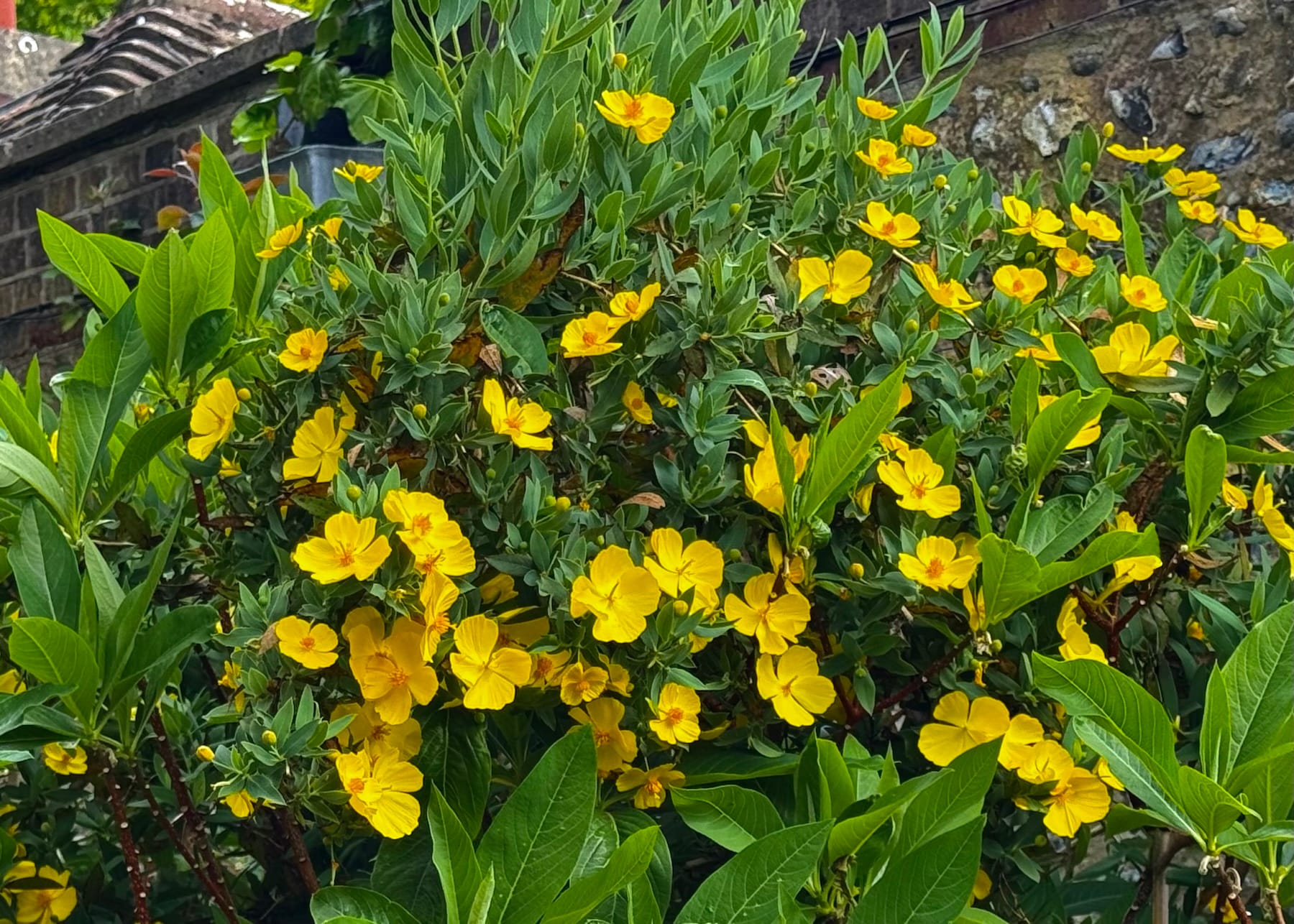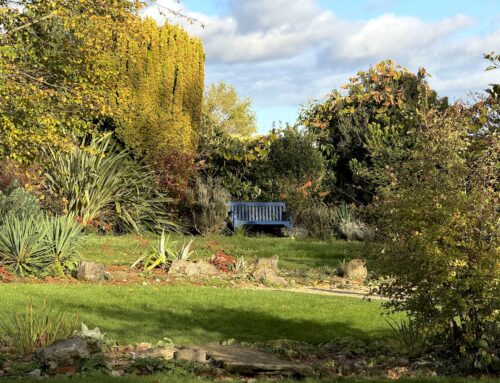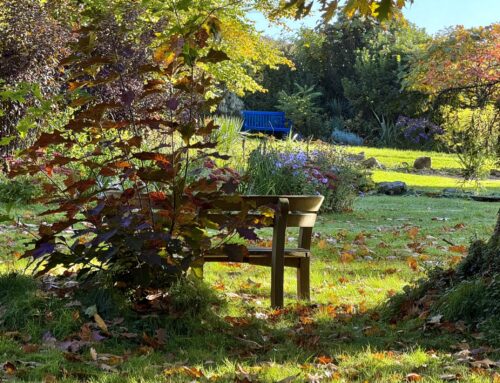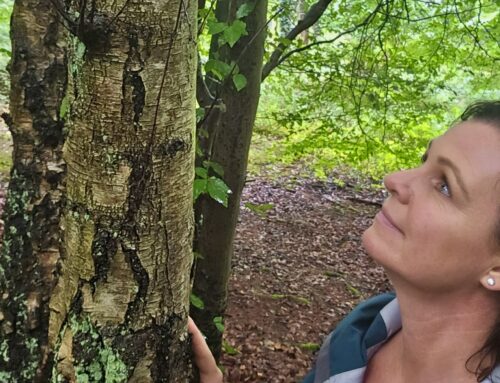Above: A large bush poppy growing outside of the cottage.
Plant of the month: bush poppy (Dendromecon rigida)
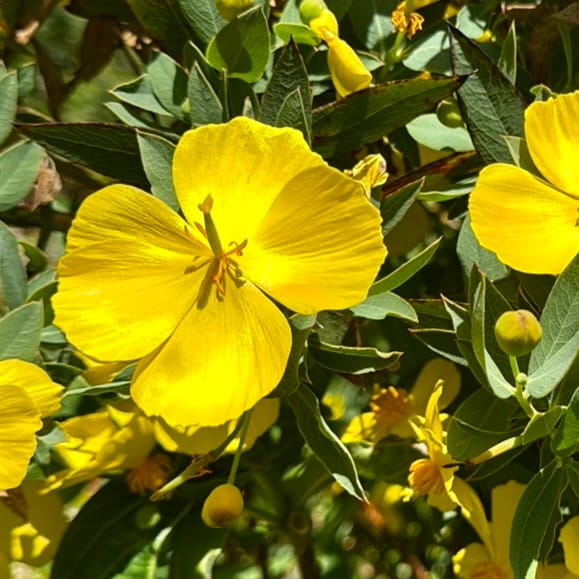 John Brookes put a priority on planting plants with long bloom times and/or those that provided interest in more than one season. This way his plantings would change with the seasons with more depth and texture than if he had chosen plants with short bloom times and only a single season of interest. Perhaps this is why he favoured hydrangeas over lilacs.
John Brookes put a priority on planting plants with long bloom times and/or those that provided interest in more than one season. This way his plantings would change with the seasons with more depth and texture than if he had chosen plants with short bloom times and only a single season of interest. Perhaps this is why he favoured hydrangeas over lilacs.
One unusual shrub that is usually evergreen and blooms all summer is the island bush poppy (Dendromecon rigida). From late spring until early autumn, it is covered with bright sulphur-yellow flowers that are about 5-7cm (2-3 inches) across and contrast beautifully with its long, narrow, glaucous leaves. It is a vigorous shrub when well-established, growing up to 3 metres (10 feet) tall and half as wide.
Discovered by the Scottish botanist, David Douglas, and introduced in the UK in the 1850s, bush poppies are native to California and Mexico where they grow on exposed slopes and bluffs and in canyons. They are only hardy in coastal and relatively mild areas in the UK where temperatures do not fall below -5°C or 23°F. If grown outside, they can be semi-evergreen in colder winters, so they are best grown in a protected spot on or near a south or west facing wall that reflects heat, and in well-draining soil with full sun. Unhappy with ‘wet feet, bush poppies are drought and salt-spray tolerant, and not at all fussy about the PH of the soil in which they are planted.
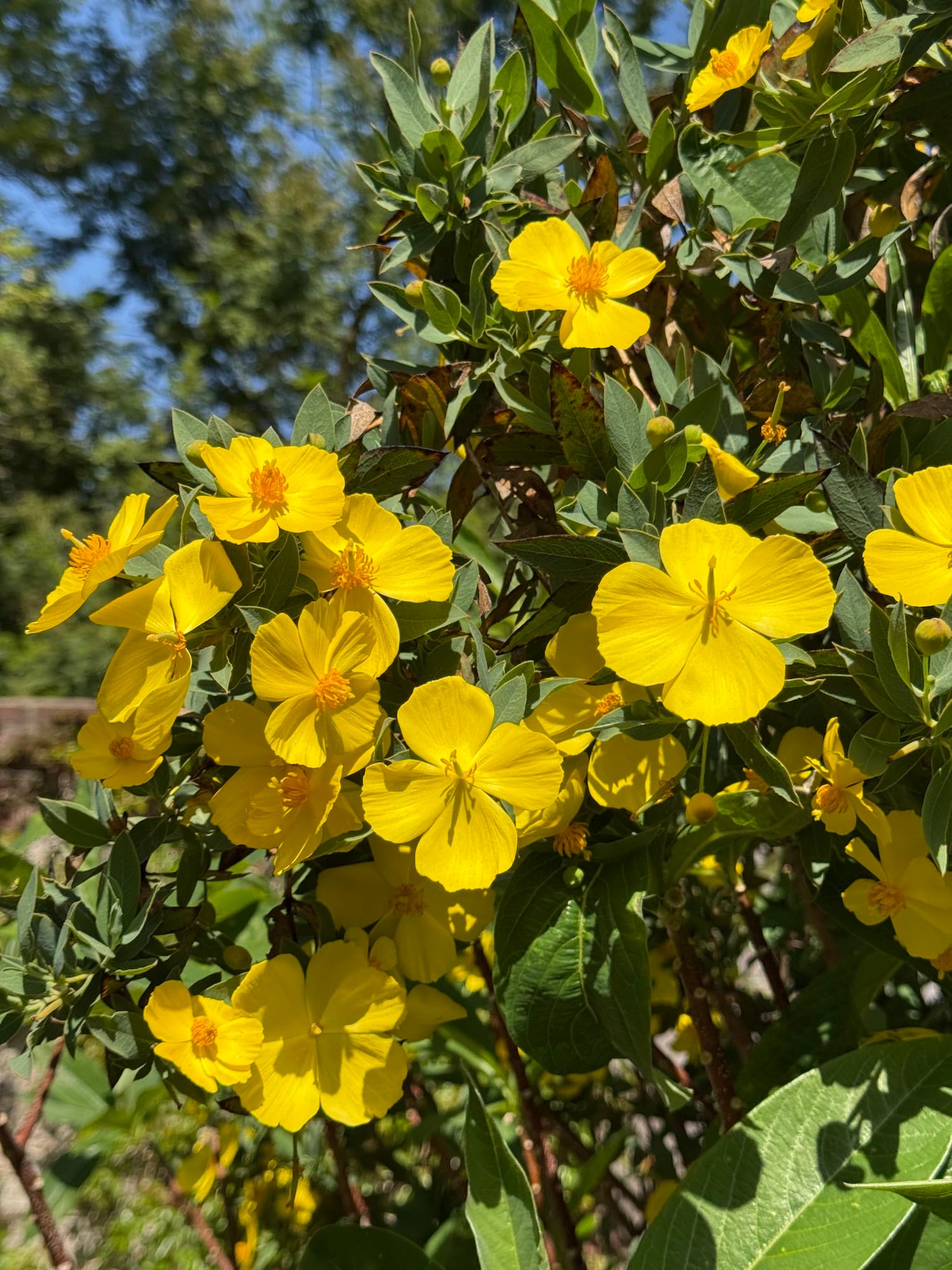 They are relatively rare plants in the UK, perhaps because they are very difficult to propagate from softwood or hardwood cuttings. In fact, they don’t respond well to heavy pruning at all and are best pruned lightly after flowering when necessary.
They are relatively rare plants in the UK, perhaps because they are very difficult to propagate from softwood or hardwood cuttings. In fact, they don’t respond well to heavy pruning at all and are best pruned lightly after flowering when necessary.
Here at Denmans Garden, there is a large Dendromecon rigida, which means ‘rigid tree poppy’ in Latin, growing on the west wall of the Cottage where it is protected by nearby walls to the north and east. One of its perennial neighbours is the California tree poppy, Romneya coulteri.
How confusing: Two plants named ‘tree poppy’ and both from California and yet obviously entirely different plants.
This is when ‘binomial nomenclature’, the system of naming plants with two names (the first indicating its genus and the second its specific epithet or quality – in most cases) comes in very handy.
The California tree poppy is named after the Irish botanist and explorer Thomas Coulter who first collected the plant in California and his friend, Dr. Thomas Romney Robinson – hence Romneya coulteri. Both Romneya coulteri and Dendromecon rigida are members of the Papaveraceae family and so they are poppies of a sort.
So – stick to your Latin to keep your plants straight…until some botanist somewhere changes their names, that is.

